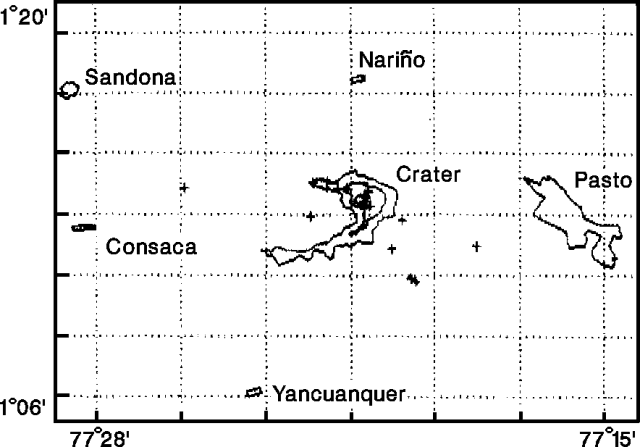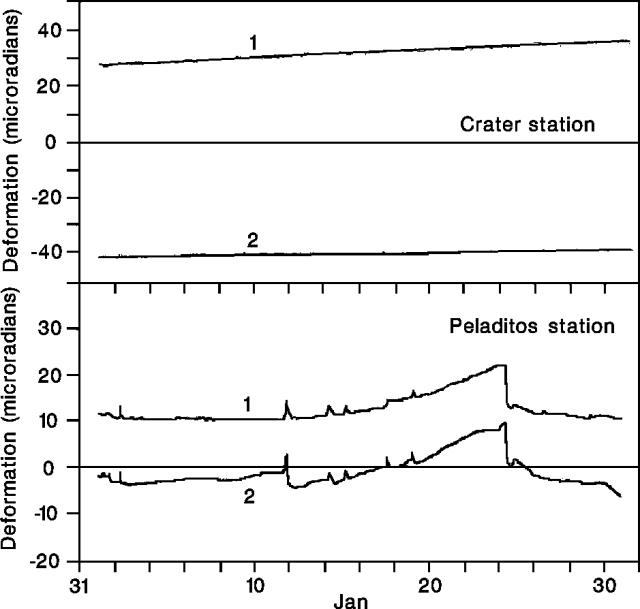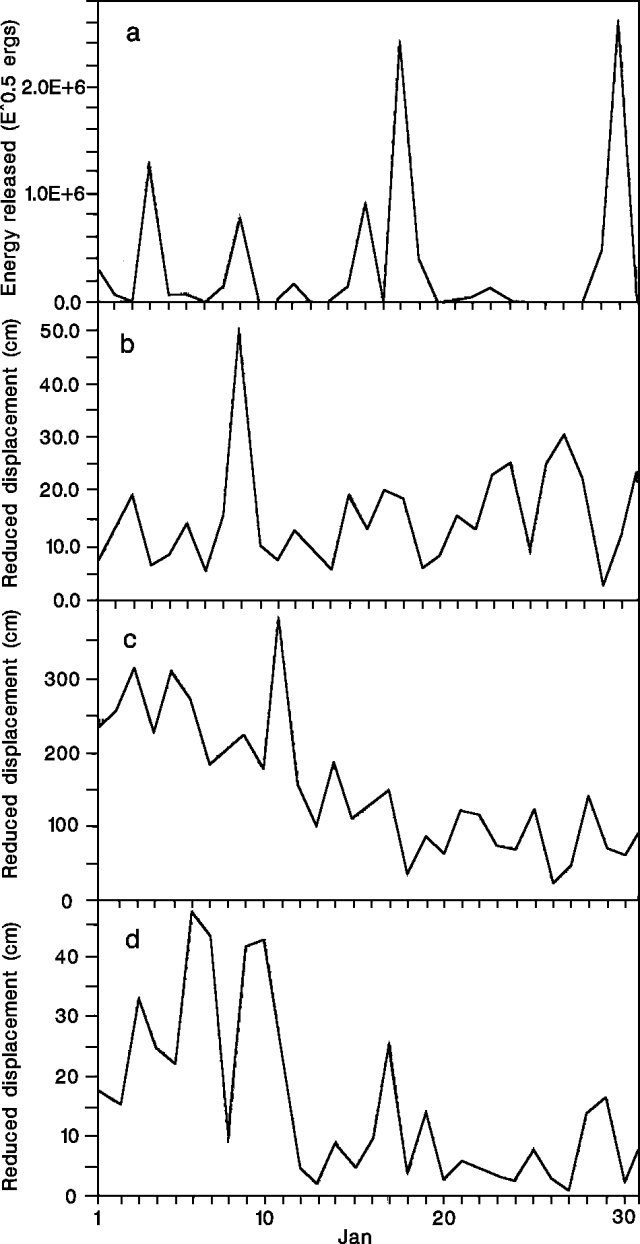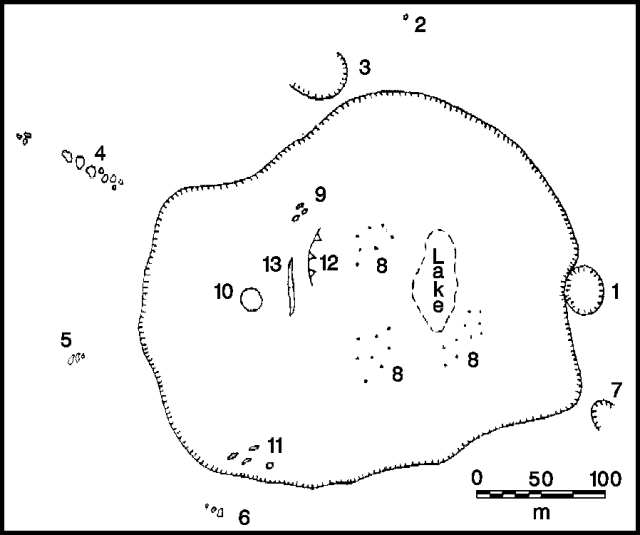Report on Galeras (Colombia) — January 1991
Bulletin of the Global Volcanism Network, vol. 16, no. 1 (January 1991)
Managing Editor: Lindsay McClelland.
Galeras (Colombia) Some seismicity stronger; minor deformation; fumarole data
Please cite this report as:
Global Volcanism Program, 1991. Report on Galeras (Colombia) (McClelland, L., ed.). Bulletin of the Global Volcanism Network, 16:1. Smithsonian Institution. https://doi.org/10.5479/si.GVP.BGVN199101-351080
Galeras
Colombia
1.22°N, 77.37°W; summit elev. 4276 m
All times are local (unless otherwise noted)
Low-frequency earthquakes were stronger (as measured by reduced displacement; figure 29) and more numerous during January. A slight increase in energy released by high-frequency earthquakes was also recorded. The high-frequency events were located around the crater and to the SE (figure 30), at depths of 1.7-4.1 km. Long-period events and tremor activity decreased.
 |
Figure 30. Epicenters of 13 high-frequency earthquakes at Galeras, January 1991. Courtesy of INGEOMINAS. |
Dry tilt and level-line measurements showed small variations in deformation during January. The tangential component of the Crater station tiltmeter recorded steady inflation, with a total increase of 9 µrad during the month. A tiltmeter 2 km E of the crater (Peladitos) recorded inflation between 12 and 24 January (14 µrad radial and 12 µrad tangential), and rapid deflation on 24 January (figure 31).
 |
Figure 31. Radial (1) and tangential (2) deformation at Peladitos station tiltmeter, 2 km E of the active crater at Galeras, January 1991. Courtesy of INGEOMINAS. |
The January SO2 flux, measured by COSPEC, was moderate, and temperatures at Calvache and Deformes fumaroles (figure 32) remained stable with respect to December measurements (table 3). A small increase in temperature was measured at the incandescent Besolima fumaroles, located in the W-sector fissure that opened in early September 1990.
Table 3. Fumarole activity (visual estimate of emission rate) and temperature ranges measured by thermocouple in accessible vents at Galeras, January 1991. Numbers correspond to locations shown in figure 32.
| Fumarole | Name | Dec 1989 | Aug 1990 | Sep 1990 | Dec 1990 | Jan 1991 | Jan 1991 Activity |
| 1 | El Pinta | -- | -- | -- | -- | very low | |
| 2 | Calvache | 88°C | 88°C | -- | -- | 88-92°C | low to moderate |
| 3 | El Paisita | -- | -- | -- | -- | 70-80°C | very low |
| 4 | Besolima | -- | -- | 738°C | 550-575°C | 520-738°C | very high (incandescence) |
| 5 | Chaves | -- | -- | -- | -- | 90-102°C | moderate |
| 6 | Deformes | 243°C | 243°C | -- | 250-265°C | 250-265°C | high |
| 8 | Campo Fumarlico | -- | -- | -- | -- | -- | high |
| 9 | Bernardo | -- | -- | -- | -- | -- | very high (incandescence) |
| 10 | Portillas | -- | -- | -- | -- | -- | very high (incandescence) |
| 11 | Campo Joyeria | -- | -- | -- | -- | -- | very high (incandescence) |
Geological Summary. Galeras, a stratovolcano with a large breached caldera located immediately west of the city of Pasto, is one of Colombia's most frequently active volcanoes. The dominantly andesitic complex has been active for more than 1 million years, and two major caldera collapse eruptions took place during the late Pleistocene. Long-term extensive hydrothermal alteration has contributed to large-scale edifice collapse on at least three occasions, producing debris avalanches that swept to the west and left a large open caldera inside which the modern cone has been constructed. Major explosive eruptions since the mid-Holocene have produced widespread tephra deposits and pyroclastic flows that swept all but the southern flanks. A central cone slightly lower than the caldera rim has been the site of numerous small-to-moderate eruptions since the time of the Spanish conquistadors.
Information Contacts: INGEOMINAS-OVP.



